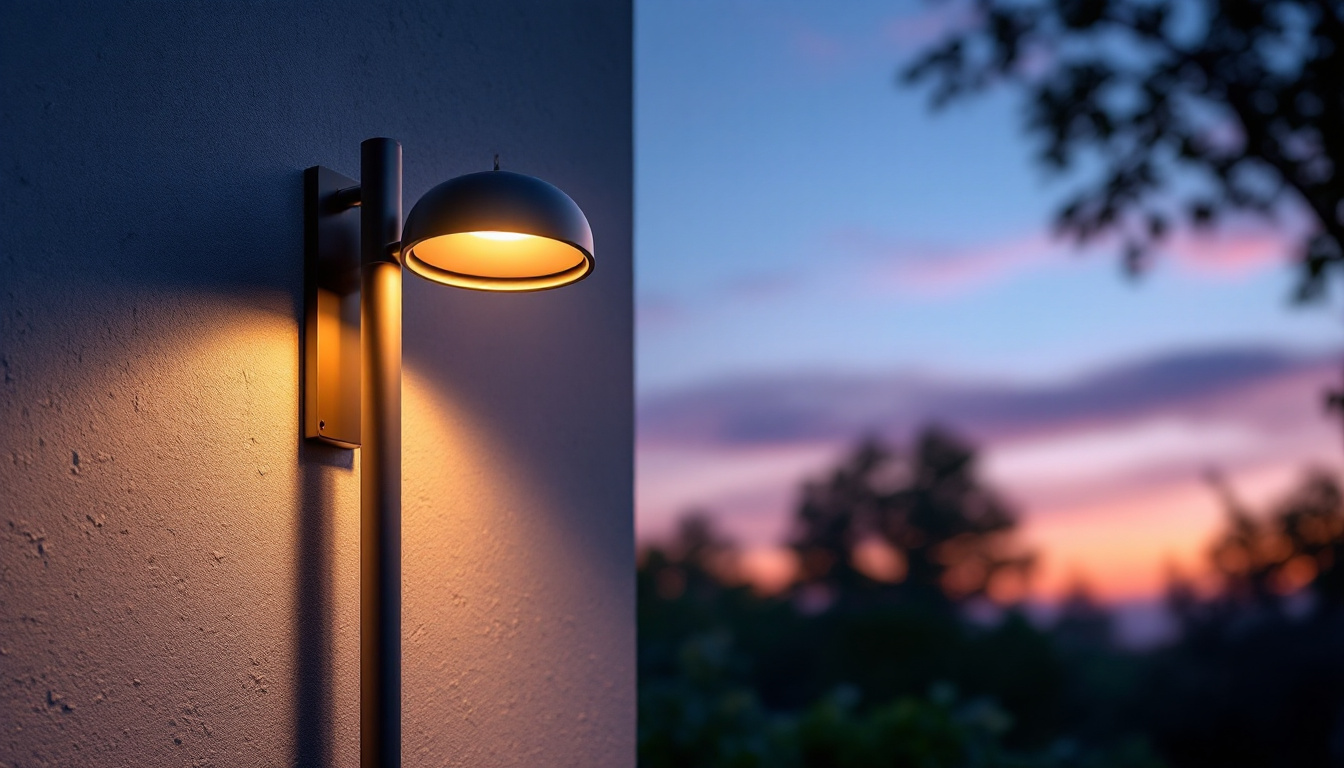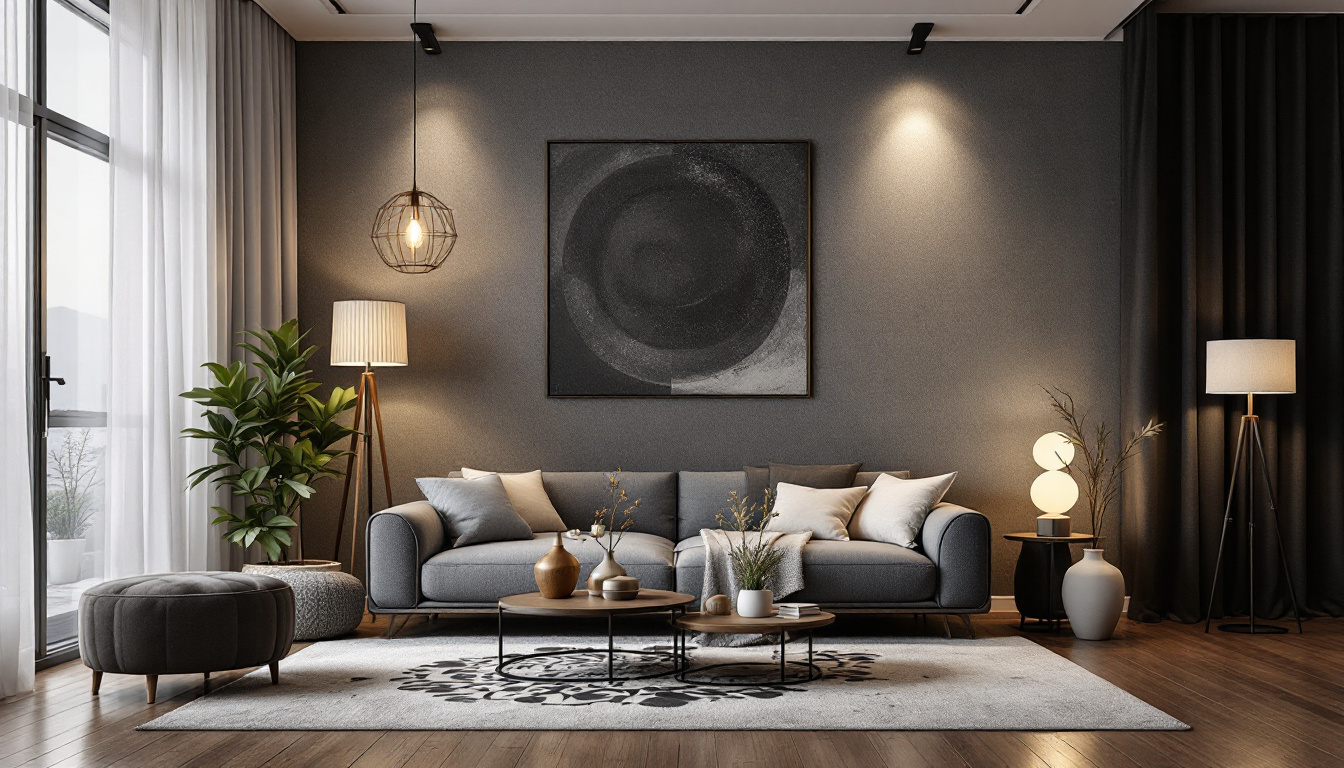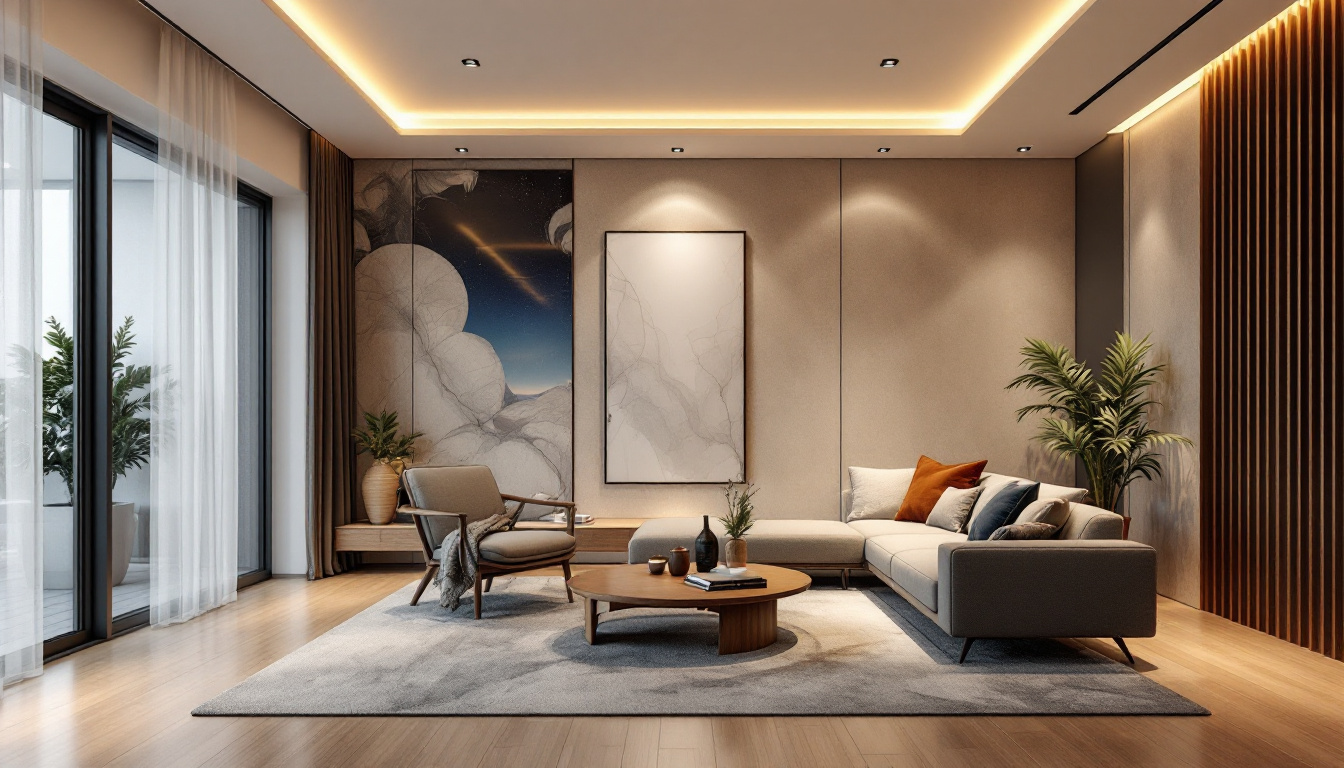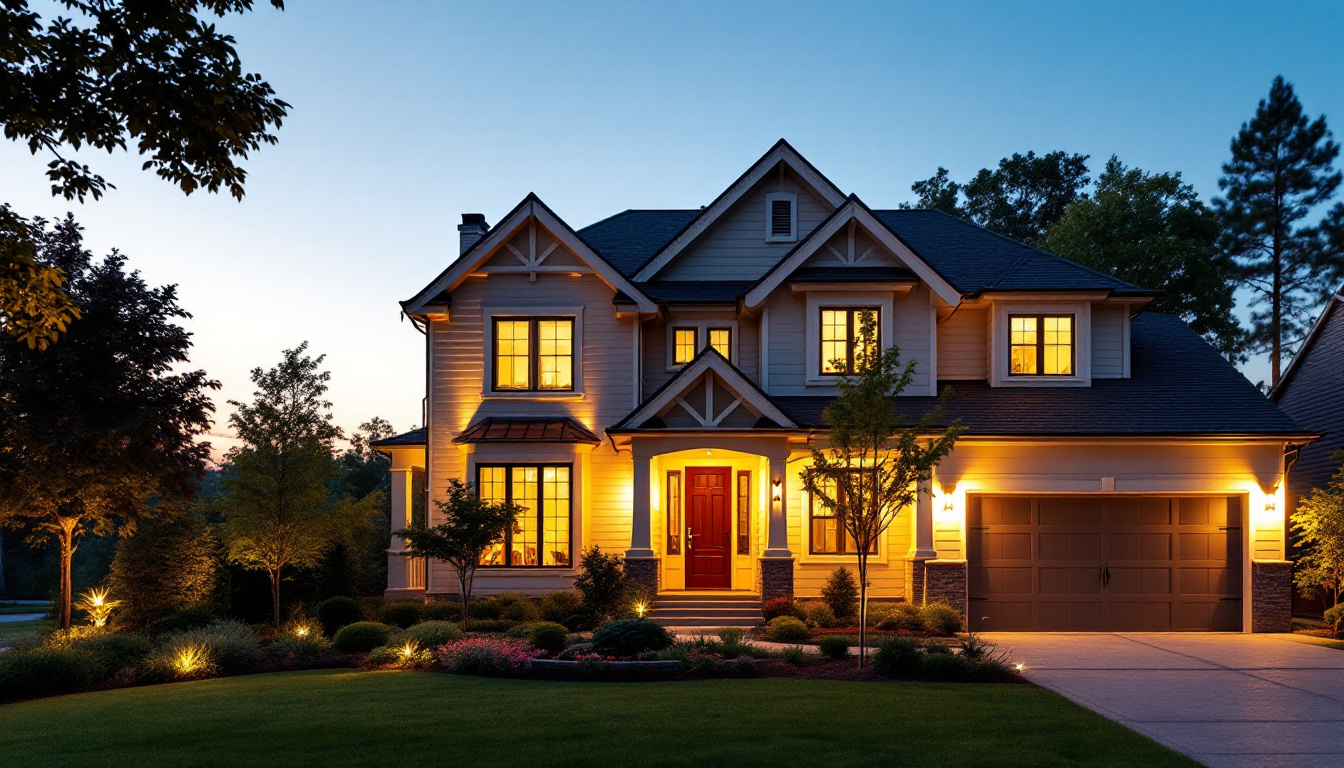
As the demand for energy-efficient and smart lighting solutions continues to rise, exterior dusk to dawn lights have become a staple in modern outdoor lighting design. These fixtures not only enhance the aesthetic appeal of properties but also provide essential security and safety features. For lighting contractors, understanding the various approaches to implementing these systems is crucial for meeting client needs and maximizing project efficiency.
Dusk to dawn lights are designed to automatically turn on at sunset and off at sunrise. This functionality is primarily achieved through the use of built-in photocells, which detect ambient light levels. The technology behind these lights has evolved significantly, providing contractors with a range of options that cater to different applications and preferences. With the increasing demand for energy-efficient solutions, dusk to dawn lighting has become a popular choice for both residential and commercial properties, offering not only convenience but also enhanced security and safety.
The core component of dusk to dawn lighting is the photocell sensor. This device measures the surrounding light intensity and activates the light when darkness falls. Contractors should be aware of the various types of photocells available, including adjustable models that allow for sensitivity modifications. This adaptability can be particularly beneficial in areas with fluctuating light conditions. Additionally, some advanced photocells come equipped with features such as time delay settings, which prevent the lights from turning on during brief periods of twilight or when passing vehicles create temporary shadows. Such features ensure that the lighting system operates efficiently while minimizing unnecessary energy consumption.
When selecting dusk to dawn lights, the choice between LED and traditional incandescent or halogen bulbs is paramount. LED lights offer significant advantages in terms of energy efficiency, longevity, and brightness. For contractors, recommending LED options can lead to lower energy bills for clients and reduced maintenance costs over time. However, understanding the specific lighting needs of a project is essential to making the right bulb choice. For instance, while LEDs are ideal for general outdoor lighting, certain applications, such as accent lighting or decorative fixtures, may benefit from the warmer tones of traditional bulbs. Therefore, it is crucial to evaluate the intended use and aesthetic preferences of the space before making a final decision.
As smart home technology becomes increasingly popular, integrating dusk to dawn lights with smart systems can enhance functionality. Many modern fixtures can be connected to home automation systems, allowing for remote control and scheduling through smartphones or smart assistants. This added layer of convenience can be a selling point for clients looking to modernize their outdoor spaces. Furthermore, some systems offer compatibility with motion sensors, enabling lights to activate only when movement is detected, which can further enhance energy savings and security. The ability to customize lighting schedules and settings through user-friendly apps not only adds a modern touch but also empowers homeowners to tailor their outdoor lighting to their lifestyle and preferences.
When planning the installation of dusk to dawn lighting, several design considerations must be taken into account. These factors can significantly influence the effectiveness and aesthetic appeal of the lighting solution.
Strategic placement of lights is essential for maximizing coverage and minimizing dark spots around a property. Contractors should evaluate the layout of the space, considering factors such as pathways, entrances, and landscaping. Proper placement not only enhances safety but also contributes to the overall ambiance of the outdoor area.
The style and finish of dusk to dawn fixtures should complement the architecture of the property. From sleek modern designs to more traditional lantern styles, there is a vast array of options available. Contractors should work closely with clients to select fixtures that align with their aesthetic preferences while ensuring functionality.
Light output and color temperature play critical roles in the effectiveness of dusk to dawn lighting. For instance, warm white light can create a welcoming atmosphere, while cooler temperatures may enhance visibility and security. Understanding the specific needs of each project will help contractors recommend the most suitable options for their clients.
Proper installation is key to the performance and longevity of dusk to dawn lighting systems. Adhering to best practices not only ensures that the lights function correctly but also minimizes the risk of future issues.
Before installation, contractors must assess the electrical requirements of the selected fixtures. This includes evaluating the voltage, wattage, and compatibility with existing wiring. Ensuring that the electrical components are up to code is crucial for safety and functionality. Additionally, using weatherproof fixtures and connections is essential for outdoor installations.
Once installed, testing the photocell sensors is vital to ensure they operate as intended. This may involve adjusting the sensitivity settings to account for the specific environmental conditions of the installation site. A thorough calibration process will help avoid issues such as lights turning on too early or off too late.
Educating clients about the importance of regular maintenance can prolong the life of dusk to dawn lighting systems. Simple tasks such as cleaning the fixtures and checking for any obstructions that may block the photocell can significantly enhance performance. Contractors should provide clients with a maintenance schedule to ensure optimal operation.
Environmental conditions, such as heavy foliage or nearby streetlights, can interfere with the performance of photocell sensors. Contractors should assess the site thoroughly to identify potential obstructions and recommend solutions, such as relocating fixtures or using adjustable sensors that can be fine-tuned for specific conditions.
Setting realistic expectations with clients is crucial to avoid misunderstandings. Some clients may expect immediate results from their dusk to dawn lighting, not realizing that adjustments may be necessary over time. Providing clear communication regarding the functionality and potential limitations of the system can help manage expectations effectively.
The lighting industry is continuously evolving, with new technologies and products emerging regularly. Contractors must stay informed about the latest advancements in dusk to dawn lighting to provide clients with the best options. This may involve attending workshops, webinars, or industry conferences to enhance knowledge and skills.
Examining successful case studies can provide valuable insights for contractors looking to enhance their approach to dusk to dawn lighting installations. These examples can illustrate best practices and innovative solutions that have proven effective in real-world applications.
In a recent residential project, a contractor was tasked with illuminating a large backyard area while maintaining a cozy atmosphere. By selecting warm white LED dusk to dawn lights and strategically placing them along pathways and around seating areas, the contractor created a welcoming environment that enhanced both safety and aesthetics. The integration of smart technology allowed the homeowner to control the lights remotely, adding an extra layer of convenience.
A commercial client required a robust lighting solution for a parking lot that faced security concerns. The contractor opted for high-output LED dusk to dawn lights with adjustable photocells to ensure optimal performance throughout the year. By conducting a thorough site assessment, the contractor was able to position the fixtures to eliminate dark spots, significantly improving visibility and security for patrons. The client reported a noticeable decrease in security incidents following the installation.
In a public park project, a contractor utilized dusk to dawn lighting to enhance safety while preserving the natural beauty of the landscape. By selecting fixtures with minimal light pollution and strategically placing them along walking paths, the contractor was able to illuminate the space without disturbing the local wildlife. Community feedback was overwhelmingly positive, highlighting the improved safety and aesthetic appeal of the park.
As technology continues to advance, the future of dusk to dawn lighting holds exciting possibilities. Contractors should be aware of emerging trends that could shape the industry and influence client preferences.
With ongoing advancements in LED technology and smart lighting systems, energy efficiency will continue to improve. Future dusk to dawn lights may incorporate features such as adaptive lighting, which adjusts brightness based on real-time conditions. This innovation could lead to even greater energy savings and reduced environmental impact.
As sustainability becomes a priority for many homeowners and businesses, the integration of dusk to dawn lighting with renewable energy sources, such as solar power, is likely to gain traction. Contractors should explore solar-powered options that can provide effective lighting solutions without relying on traditional energy sources.
The user experience will continue to be a focal point in the development of dusk to dawn lighting systems. Future innovations may include more intuitive controls, improved app interfaces, and enhanced connectivity with other smart home devices. Contractors who stay ahead of these trends will be better positioned to meet the evolving needs of their clients.
Exterior dusk to dawn lights represent a significant opportunity for lighting contractors to enhance outdoor spaces while providing energy-efficient and smart solutions. By understanding the technology, design considerations, installation best practices, and emerging trends, contractors can position themselves as experts in the field. As the industry evolves, staying informed and adaptable will be key to success in this dynamic market.
Ready to elevate your lighting projects with the best dusk to dawn solutions on the market? At LumenWholesale, we provide lighting contractors like you with the highest quality, spec-grade lighting products at unbeatable wholesale prices. Say goodbye to local distributor markups and hello to superior lighting that meets the highest industry standards. With our hassle-free bulk buying and free shipping, you can trust that you’re getting premium lighting at the best value — without hidden fees or compromises. Enhance your outdoor spaces with the perfect blend of quality, affordability, and convenience. Visit LumenWholesale now for Wholesale Lighting at the Best Value and make your next project shine.

Discover how lighting whips can streamline projects for lighting contractors, offering efficiency and ease in installations.

Discover the essential guide for lighting contractors on selecting and installing living room light fixtures.

Discover expert insights on 6-inch recessed lighting from top lighting contractors.

Discover essential compliance guidelines and expert tips for lighting contractors working on outdoor house projects.